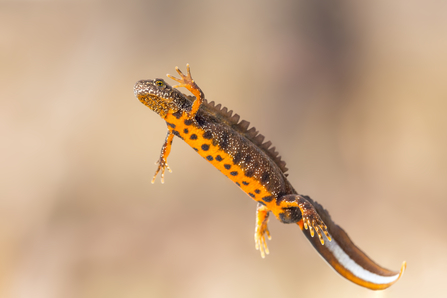Yorkshire Wildlife Trust are partnering with Natural England to create and restore ponds in selected parts of North and West Yorkshire for the conservation of Great Crested Newts. The ponds are being created to compensate for the environmental impacts of development, will help to strengthen or expand existing Great Crested Newt populations and create new habitat for other wetland wildlife. It is expected that newts and other wildlife will colonise the ponds naturally.
The ponds will be fully funded and Yorkshire Wildlife Trust will carry out all the project management and works required (including obtaining planning permission) – all you need to do is periodic maintenance and allow occasional site visits.
All potential pond sites must lie amongst rough habitat and be within our target areas, so a desk-study and site visit will be provided by us to confirm suitability. More information can be found below – please read this if you’re interested in enquiring.

